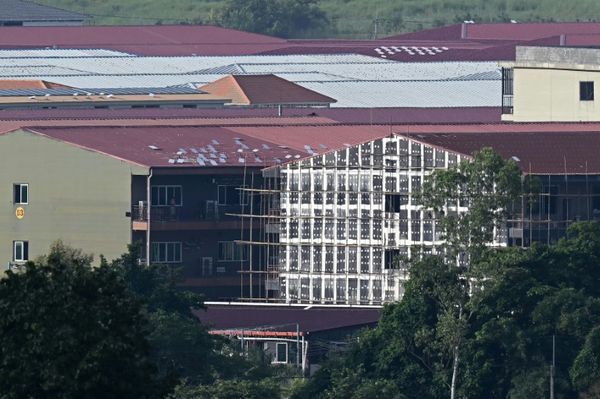
The treasurer, Jim Chalmers, has raised hopes for a series of interest rate cuts starting from next month after a key measure of underlying inflation dropped below 3% for the first time in three years.
The Australian Bureau of Statistics figures come three days before the election and the prospect of further relief for mortgaged households could provide a boost to Labor at the tail end of a campaign dominated by cost-of-living concerns.
Analysts and investors have largely locked in bets for a Reserve Bank rate cut on 20 May after the central bank’s preferred price measure – the trimmed mean rate – fell from 3.3% in the year to December to 2.9% in March.
The headline inflation rate – which has been affected by government energy bill subsidies – was steady at 2.4%. Both measures are now within the RBA’s 2-3% target range for the first time since December 2021.
The CBA’s head of Australian economics, Gareth Aird, said the RBA remained on course to delivers its second rate cut this year on 20 May, from 4.1% to 3.85%, but cautioned it wasn’t “a done deal”.
Financial markets on Wednesday afternoon were more bullish, however, pricing in four RBA rate cuts by November, according to NAB.
Chalmers told a Wednesday press conference the latest figures were “a powerful demonstration of the progress that Australians have made together in the economy”.
With an eye to Saturday’s polls, the treasurer highlighted that “the market is expecting somewhere between four and five additional interest rate cuts this year, and if that eventuated that would deliver hundreds of dollars every month to Australians with a mortgage”.
“I’m not making a prediction about that, but the market has a very firm view that there are more interest rate cuts on the way, and I don’t see anything in these numbers that would substantially alter their expectations,” Chalmers said.
The country is still grappling with rising prices for unavoidable purchases, up by 2.3% annually in March. The ABS had estimated non-discretionary prices were up just 1.8% in December.
Electricity prices jumped by 16.3% in the March quarter, the ABS data shows, as most of the $1,000 energy rebates in Queensland were used up at the end of last year, leaving higher out-of-pocket costs for households.
It was a similar story in other states and territories as taxpayer-funded bill relief rolled off, though prices overall remained down 12% from a year earlier.
Fuel and rent prices up
Automotive fuel prices also rose in the first three months of 2025 despite falling over the year, picking up 1.9% higher from the end of 2024, the data showed.
Annual rent inflation slowed further to 5.5%, well down from the peak of nearly 8% at the same time last year. Still, rental costs remain elevated: rising by 1.2% in the first three months of 2025 and more than they did in 2018 and 2019 combined.
Supermarket bills rose as the cost of food and non-alcoholic beverages picked up 3.2%, while a 6.5% rise in alcohol and tobacco prices also pushed overall prices up, the ABS said.
As Coles released a $9.4bn profit for the first three months of 2025, the supermarket’s chief executive officer, Leah Weckert, on Wednesday said customers were still cutting back on certain purchases – such as confectionary, meat, and alcohol – due to the cost of living.
Weckert said while there had been deflation in a “number of categories”, including fresh produce items such as broccoli and tomatoes and packaged goods such as cereal and tea, the price of some products including coffee and chocolate remained high.
Predictions of four cuts was too optimistic, Diana Mousina, AMP’s deputy chief economist, said.
Wednesday’s data showed Australia still had “problem areas” with inflation, she said.
“Financial markets have gotten overly excited about RBA rate cuts this year.
“Most of this has occurred because of potential downside impacts to growth from the Trump tariffs, rather than a reflection of the Australian economy.”







